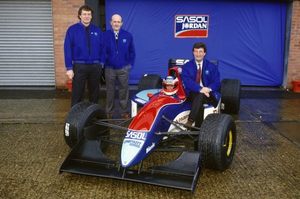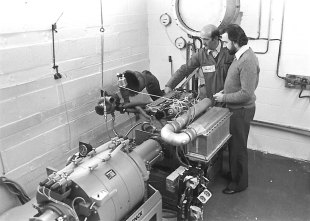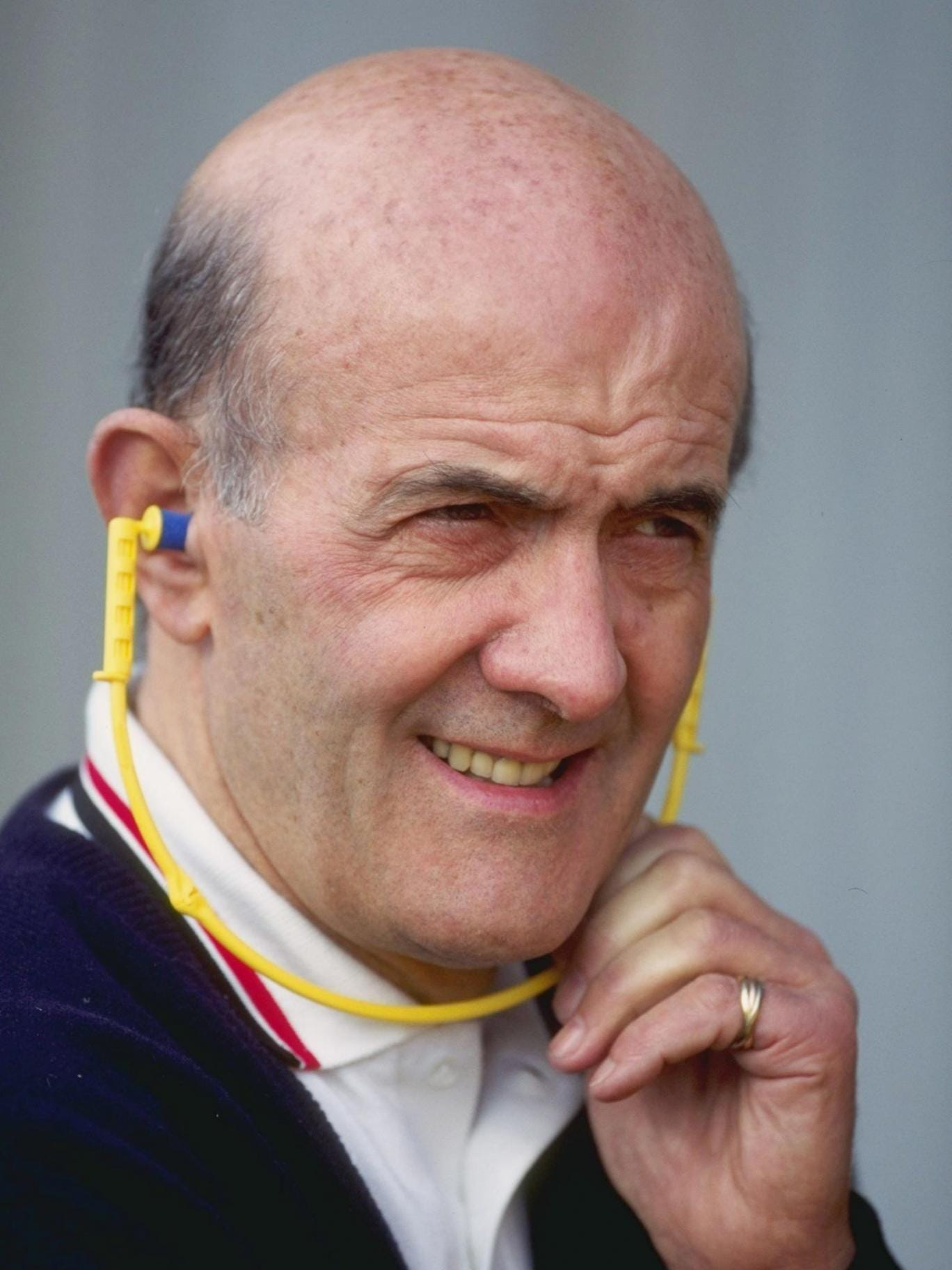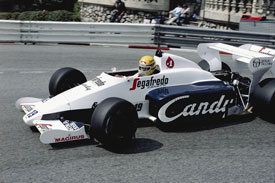Brian Hart Ltd.
- Hart Racing Engines ( later: . Brian Hart Ltd. ) was an in Harlow, UK, based manufacturer of racing engines. The company was founded in 1969 by former racing driver Brian Hart. From hard- engineered motors a constant in the formula 2 From 1981 to 1997 Hart were almost constantly represented in the Formula 1 World Championship in the 1970s; the company came here both as a manufacturer 's own engines as well as a tuner of Cosworth engines in appearance. Hart was one of the smallest engine manufacturer in the Formula 1 The company operated mostly with a very small budget, so that it could not always implement all the current trends in a timely manner. Hart's self-developed formula 1 engines were not the reasons why less successful than the revised by him on behalf of customers Cosworth engines. In 1998, Tom Walkinshaw the engine manufacturer and incorporated it into his Formula 1 team Arrows. Until 1999, designed by Brian Hart Formula 1 engines went under the brand name Arrows at the start.
Hard - motors in the formula 2
Brian Hart began in 1969 with the maintenance and tuning of racing engines for different racing classes. 1971 and 1972 First successes came one yourself than with Cosworth engines, which had been prepared by Hart, won the European Formula 2 Championship Ronnie Peterson ( March ) and Mike Hailwood ( Surtees team ).
The first engine, which bore the name of Hart, was the hard- 420R, a 2.0 -liter inline four- cylinder engine, which was derived from the Cosworth BDA. The 420R appeared in the Formula 2 season 1976 the team at Project Four Racing and Kauhsen; Drivers were, among others, Eddie Cheever and Klaus Ludwig. 1977 Keke Rosberg drove in a Chevron B40 for the team Fred Opert Racing its first victory of a hard - motor in the formula 2. 1979 was a hard one compound with the Formula 2 team Toleman, which primarily (but not exclusively ) was supplied with motors. Tolemans drivers Brian Henton won in 1979 in a Ralt - hard two races and was second in the Formula 2 Championship; 1980 Henton won the championship for the team Toleman -Hart, and teammate Derek Warwick was runner-up. 1981 rose Toleman Hart in conjunction with the Formula 1; Harts engines found nevertheless to 1982 use with smaller Formula 2 team.
Hard engines in Formula 1
Engines that were designed by Brian Hart, found 1981-1986 and 1993-1997 in Formula 1 use. Between these two phases, Hart worked with the tuning of Cosworth engines for numerous clients teams in Formula 1
The Turbo Era
In 1981 the first hard - engine appeared in Formula 1 There was a 1.5 -liter inline four- cylinder with turbocharging. The hard- 415T was after the Renault EF1 and the Ferrari 126C the third supercharged engine, which was used in Formula 1, and it was also the first turbo engine, which had no connection to any automobile manufacturers.
Technically, the hard- 415T was derived from the successful Formula 2 engine 420R. Its peculiarity was that he did not have removable valve cover. The engine block was cast in one piece, so that the valves had to be mounted through the interior of the cylinder. The hard - engine was one of the worst performing turbo engines. In the debut year, his performance was about 490 hp; so that they were level with a Cosworth DFV naturally aspirated engine. 1984 surpassed the hard - engine with 560 hp now the power of a naturally aspirated Cosworth DFY by about 30 horsepower, while Ferrari's turbo engine delivered 660 hp already. In addition, the hard - engines were considered to be unreliable: In the debut season of Toleman - Hart Brian Henton fell nine times in a row before the first checkered flag of the young team could be achieved.
In the turbo era Hart supplied mainly small, financially weak teams. Customers included beside Toleman (1981-1985), the teams RAM Racing (1984-1985), Spirit (1984-1985) and the team Haas ( 1985-1986). World Cup points achieved only Toleman, the ten points graduated in 1983 Constructors' Championship in ninth place and in 1984 with 16 points was seventh. The most successful driver of a vehicle, which was equipped with a turbo engine was hard, Ayrton Senna, who reached in 1984 a second place and two third places. He scored during rainy and prematurely terminated the Monaco Grand Prix, which he between Alain Prost (winner) and Stefan Bellof (third) finished second the best result.
The use of Harts turbo engines ended in the spring of 1986. Having Toleman was acquired by Benetton end of 1985 and the future began engines from BMW and the other teams RAM and Spirit had ceased operations, used in 1986, only the team Haas Brian Hart's engines. Also Haas finally gave up the 415 engines, as in the course of the 1986 season of the long-awaited turbocharged engine from Cosworth was ready.
Brian Hart dealt then between 1987 and 1991 with the tuning of Cosworth normally aspirated engines, before he returned in 1993 with their own Zehnzyindermotoren into Formula 1.
The naturally aspirated era
In the course of 1992, Hart developed with the financial support of the South African oil company Sasol a ten-cylinder naturally aspirated engine of the type in 1035, which was exclusively used by Jordan Grand Prix in 1993 and 1994. The Hart in 1035 had a cylinder angle of 72 degrees. He was one with an output of about 715 hp ( 1994) to the weakest engines the starter box. The power output was about 10 hp more than the Cosworth HB- engines; the most powerful engine, the engine of the Scuderia Ferrari, made almost 100 hp more.
When, after the fatal accidents of Senna and Ratzenberger at the San Marino Grand Prix in 1994 for the Formula 1 1995 season, the FIA , inter alia, decided to reduce the displacement to 3.0 liters, Hart joined this step is the only manufacturer with a reduction in the number of cylinders. Harts engine for 1995 was therefore a 3.0 -liter eight-cylinder type 830 The engine was used in 1995 and 1996 by Arrows. During this time it was the only engine that did not reach pneumatic valve control. The best result with a hard Gianni Morbidelli 830 scored when he was third in 1995 at the Grand Prix of Australia. In 1997 it was again - now with a pneumatic valve control - used by Minardi but failed to reach the weakest engine of the year no championship points.
From 1998 to 1999, ten-cylinder engines that Brian Hart had developed, under the name of the British Arrows 3.0 Arrows Racing team. 2002 tried the British team Phoenix Finance ( later: DART Racing), a chassis of the recently failed Prost team with a ten-cylinder engine of hard to get to the start. However, the team was not allowed to participate in the Formula 1 World Championship.
Hard as engine tuner
Between 1987 and 1991, prepared hard Cosworth normally aspirated engines of the types DFZ and DFR for customer teams. Hart was so beside Heini Mader Racing Components and Langford & Peck one of the major tuning firms the new Saugmotorära. At Hart's clients have included:
- Arrows (1989 to 1991)
- Coloni (1991 )
- Fondmetal Corse ( 1991)
- Larrousse (1991 )
- Onyx (1990)
- Osella (1990 )
- Tyrrell (1987 and 1988)









